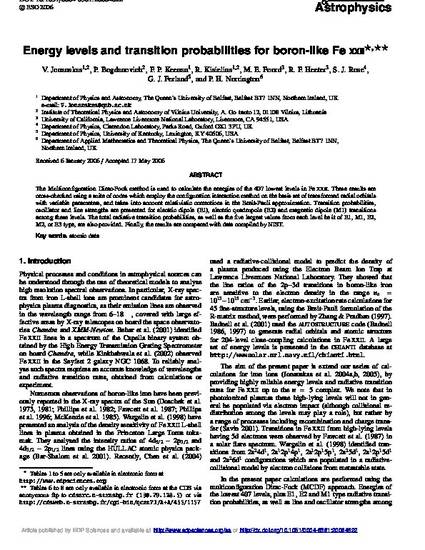
The Multiconfiguration Dirac-Fock method is used to calculate the energies of the 407 lowest levels in FeXXII. These results are cross-checked using a suite of codes which employ the configuration interaction method on the basis set of transformed radial orbitals with variable parameters, and takes into account relativistic corrections in the Breit-Pauli approximation. Transition probabilities, oscillator and line strengths are presented for electric dipole (E1), electric quadrupole (E2) and magnetic dipole (M1) transitions among these levels. The total radiative transition probabilities, as well as the five largest values from each level be it of E1, M1, E2, M2, or E3 type, are also provided. Finally, the results are compared with data compiled by NIST.
Available at: http://works.bepress.com/gary_ferland/37/
Published in Astronomy & Astrophysics, v. 455, no. 3, p. 1157-1160.
Reproduced with permission from Astronomy & Astrophysics, © ESO